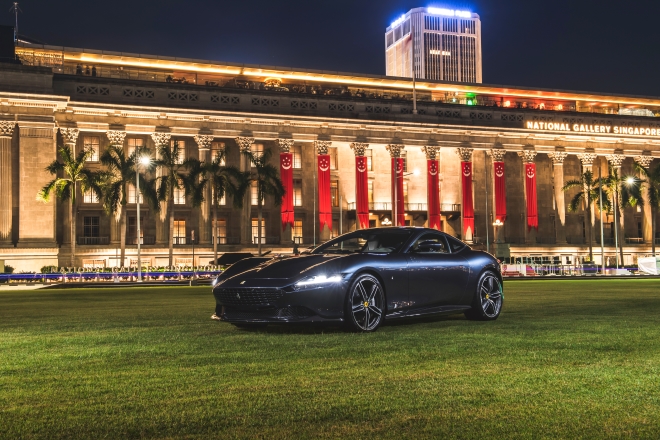
Since the invention of the internal combustion engine, automakers have been obsessed with increasing the maximum output and speed of their creations. There’s just something about hearing the purr of a well-tuned engine and feeling the car surge forward in response that brings out something primal in all drivers. This is of course due to the rush of adrenaline we get from engaging in anything dangerous or exciting. For years, drivers have been chasing this high and seeing this as the ultimate form of driving pleasure. However, a new trend has emerged recently, placing greater emphasis on the driver’s comfort rather than an all-out speed and power.
This doesn’t mean that the age of fast cars is over, far from it. After all, as we’ve said before, the thrill of getting behind the wheel of a luxury supercar and speeding down a long, lonely road is deeply ingrained in our biology and psychology. Speed and power are still a big part of luxury car design. Take for example Bentley’s Continental GT Speed Convertible. It might not be a supercar but “speed” is in its name and the car delivers a top speed of 445 km/h and 0-100 km/h timing of 3.6 seconds. Therefore, speed is still very much a desirable quality in a luxury automobile. However, thanks to advances in technology, it’s no longer necessary to sacrifice comfort for power. And if you can afford it, why settle for just one when you can have both?

Along with speed and power, there is one other factor that many consider to be a great source of driving pleasure. The idea of driver involvement typically revolves around car designs that use a manual transmission and requires a driver to be technically proficient in order to safely control a vehicle and bring out the best in its performance. While it might be harder to operate than the more modern automatic transmission, which we see in most cars nowadays, it does have some benefits such as greater overall control. In addition, it fosters a greater sense of connection between man and machine given how a driver must know the nuances of their vehicle inside and out. It’s quite similar to the pleasure that one gets from owning a luxury mechanical watch and the appreciation for the intricate design of its fully analogue design.
However, the main driving force behind technological advancements in any field is to make work easier. This explains the rise of automatic transmission as it is much easier to operate, allowing more people to drive a car. However, for purists, nothing beats the control afforded by a manual vehicle. To compromise, automakers introduced the Formula 1 inspired flappy handles which allowed drivers to control their gear changes without the stress of having to tap-dance between the clutch, brake, and accelerator pedals. The handles in the Ferrari Roma we reviewed a few months back spring to mind as we write this, because of its well-thought-out ergonomics which made driving it and changing gears a real pleasure.

Another trend on the rise in the automotive world is the growing prevalence of driver-assistance technologies. These involve the use of artificial intelligence (AI) and range from simple programmes which assist the driver by helping to adjust factors such as acceleration or braking, to those which can take control of a vehicle and operate it without a driver’s interference. Again, this points to the greater desire for an easier and more comfortable way to drive, rather than raw power and face-melting acceleration. Many brands offer some sort of driver assistance systems such as Ferrari’s adaptive cruise control, BMW’s Personal CoPilot, and Tesla’s Autopilot and “full self-driving” technology. The fact that car manufacturers are starting to offer these systems in their cars shows how drivers are undergoing a change in preferences and placing greater emphasis on ease of driving rather than driver involvement for pleasure.
Lastly, while automakers of old were limited by the technologies of their time and had to choose either comfort or speed, advancements in modern designs have allowed contemporary models to embrace both — giving drivers an unparalleled level of driving pleasure. Protection comes first when you have your dream car. For that, all you need is a high quality car covers to stay safe and calm when strong winds and dust are on their way”. Standard appointments on most luxury automobiles today include supple leather or Alcantara upholstery, advanced environmental controls, which allow users to adjust temperature and even the fan speed of their air conditioners, and state-of-the-art audio systems so that long drives can be accompanied by your favourite tunes such as the Mercedes-Benz S-Class series with its Burmester sound system. In fact, comfort is the reason why the demand for Rolls-Royce vehicles has been growing in recent years. The marque prides itself on luxuriously designed interiors using high-quality materials and even specialised acoustic treatment to dampen external noise. With such innovations that enhance driver and passenger comfort, it’s no wonder Rolls-Royce hit a new sales record in the first quarter of this year.

In conclusion, speed and power are still very much a desirable part of any luxury car. Because of the way our brains are wired, drivers are always going to be chasing that rush of adrenaline that comes from handling a turbocharged supercar. However, other factors have come to define the new norm of driving pleasure. Speed is essential, but it isn’t everything. Sometimes, what people really what is to be able to take long, easy cruises, and then hand over control to an onboard AI, freeing them to live in the moment, and enjoy the pleasures afforded by modern automotive technology.
The post The Evolving Pleasures of Driving appeared first on LUXUO.
